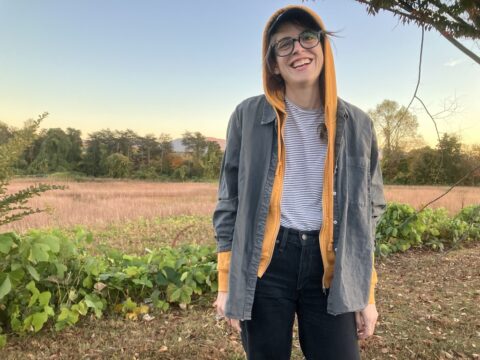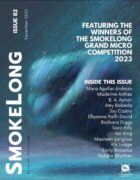You’ve defined “Things the Rain Says” as a hybrid piece. Can you talk about which forms you’re drawing from within the piece and the importance of hybridity within your writing at large?
I adore braided and lyric essays and the concision required for any sort of flash. I most often write prose poems or very petite poems and think about flash essays as a continuation or expansion and what it might mean for the lyric to be concrete, offering a reader something along the lines of sourced evidence. How can journalism become fantasy beyond the notion of “fake news” but in the very real myth making of narrative? I’m interested in melding realities to reveal something unknown or unsayable. I’m also interested in cultural commentary and playing with high-low cultural images and ideas to connect the past and present (and maybe sometimes the future).
The story weaves together the speaker’s observance of rain, allusions to fairy tales, and reference to current events surrounding the Colorado River rather seamlessly. As a reader, there seems to be an unforced connection or movement between those things. How do you achieve that effortless connection in such a short space?
My friend K calls this approach my “cloud brain” in the sense that instead of a fog or observing beautiful cumulous formations, I’m connecting thoughts, events, words, and ideas that seem disconnected as they pass through a moment in time together. I’m interested in perspectives. At the end of the day, I’m interested in blending fiction and non-fiction lyrically until it’s almost unclear where any boundaries within an essay exist. This piece comes from a larger project in which I worked on an essay a day, pulling a news headline, a fairy tale or two, and something very concrete happening in my life. The undercurrent is largely connected to censorship both in the form of text and the body. I see water rights as an extension of censorship through the concept of ownership of resources. I often use fairy tales and folklore to try and make sense of late Capitalism—this essay is an attempt at sense-making, for sure.
When I think about a fairy-tale structure and individual tales, I imagine them like a painting to be entered. Not just in the way we might see ourselves in a scene, but entering the heart of a tale to see it more broadly and find the breadcrumbs that couldn’t be seen before. The breadcrumbs of this essay unraveled in the next news cycle when the Navajo Nation was denied their share of the river (which at least nine nations and tribes along the Colorado River Basin rely on and ancestrally stewarded). I think we’re always entering a story or a moment in time in the middle, and the same is true of a fairy tale, we just don’t see it that way.
Themes of femininity, sexuality, and gender are at play within this piece. Did you set out to touch on those themes at the start of crafting “Things the Rain Says,” or did you find that they surfaced after you began weaving together different subjects?
Whether explicit or implicit, my work is in some way is always about menstruation and cyclicity. This essay is less overt. I spend a strange amount of time thinking what land use would be like if grandmothers had a larger hand in politics. This question immediately made me think Cecilia Vicuña’s line, “water is the menstrual blood of earth.” I think in many ways it’s hard to separate sexuality, gender, and femininity from land. I think there’s also a resistance to forgetting that’s an undercurrent to my work that pushes to keep sexuality and femininity at the forefront, or a focus on remembering relationships between past, present, and future.
At the end of the piece, the speaker’s thoughts unravel as they speculate about the futures of the characters from the fairy tales alluded to earlier. Such speculation is informed by the speaker’s observations and experiences in the “real world.” Can you talk about how/why you chose to end the piece that way?
I think the speculative writing can often go one of two ways. I’m a “glass half-empty/assume the worst will happen” kind of person despite my best efforts to think otherwise—I try to play with this instinct and work against it with some sort of whimsy that keeps a fairy tale alive. I think the thing about fairy tales we don’t often consider is their irony. Ending with Ave Maria, is an invitation to hope in a situation in which the speaker feels powerless while also a joke, calling Maria back into the narrative. There’s a fair amount of menstrual symbolism embedded in both fairy tales—but that’s a longer conversation to connect to land rights and land use alongside censorship.
What hybrid (whether hybrid in form or genre) work(s) have you read recently and loved?
I just read Yerra Sugarman’s Aunt Bird, which plays with prose and more formal enjambment giving life and voice to Aunt Bird, who was killed in 1942 during Nazi occupation of the Krakow ghetto. The way ancestral voice/ghost and time blend to create something that is both archival record and modern poem enthralls me. I love work that creates agency and voice for ghosts, lineages, and loss.


